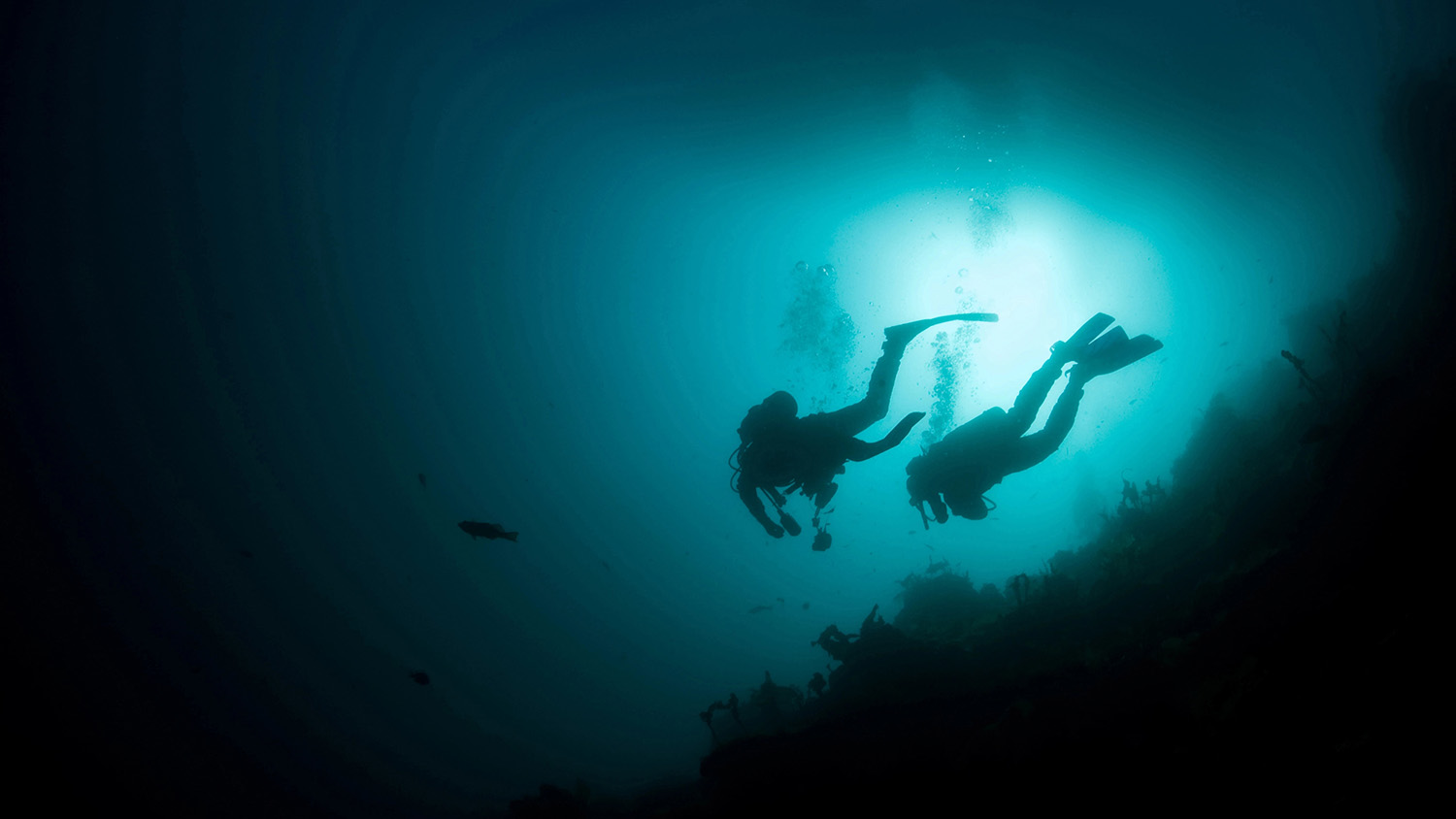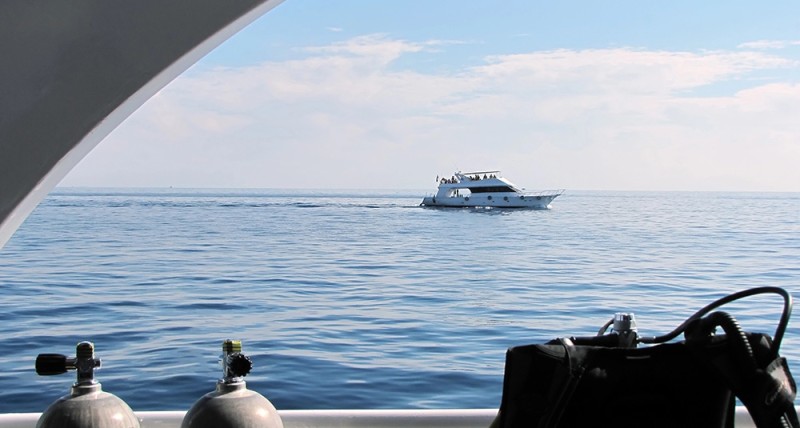For most scuba divers, the idea of exploring the world’s deepest dive sites is both thrilling and daunting. These dives represent the pinnacle of underwater exploration, but they are not for everyone. In fact, they are way out of reach for even the most experienced recreational divers. Deep diving to extreme depths is a specialized field within diving, requiring not just advanced skills, but also specific equipment and rigorous training. This is a class of divers all its own—technical divers who push the boundaries of what’s possible, embracing the challenges and rewards that come with venturing into the abyss.
The Elite World of Technical Deep Diving
Deep diving beyond recreational limits is not just an extension of typical scuba diving; it’s a whole different realm. It requires a mastery of advanced diving techniques, an understanding of complex gas mixtures, and the ability to handle the psychological demands of diving into the unknown. Technical divers, often referred to as “tec divers,” are a specialized group who have undergone extensive training to dive at depths far beyond what most divers will ever experience.
These dives take place at depths where light fades, temperatures drop significantly, and the margin for error becomes razor-thin. The allure of deep diving lies in its unique challenges, but it’s essential to understand that these dives are not just about skill—they are about preparation, the right equipment, and the ability to remain calm and focused under pressure.
Essential Equipment for Deep Diving
Diving to extreme depths requires specialized equipment that goes far beyond what’s used in recreational diving. Here’s a breakdown of the critical gear you need:
- Rebreathers
- Type: Closed-circuit rebreathers (CCR)
- Rebreathers recycle the diver’s exhaled breath, removing carbon dioxide and adding the necessary oxygen to extend dive times and reduce gas consumption. This is crucial for deep dives where traditional open-circuit scuba gear would be insufficient due to the rapid depletion of gas supplies at depth.
- Trimix Gas Mixtures
- Components: Oxygen, nitrogen, helium
- At extreme depths, the use of Trimix—an advanced breathing gas mixture—is essential. Trimix reduces the risk of oxygen toxicity and nitrogen narcosis by replacing some of the nitrogen and oxygen with helium, an inert gas that doesn’t cause narcosis. This allows divers to operate safely at greater depths.
- Technical Dive Computers
- Features: Multi-gas capability, decompression models
- Technical dive computers are designed to manage complex dive profiles involving multiple gas switches and extended decompression stops. These computers are a lifeline in technical diving, ensuring that divers adhere to their planned ascent and decompression schedules to avoid decompression sickness.
- Redundant Systems
- Examples: Backup gas supply, dual regulators, secondary dive computer
- Redundancy is a key principle in technical diving. Divers carry additional gas supplies (such as stage tanks) and have backup regulators and computers to ensure that any equipment failure doesn’t turn into a life-threatening situation.
- Dive Lights and Navigation Tools
- Type: High-intensity LED lights, underwater compasses
- Given the darkness encountered at extreme depths, powerful dive lights are essential for visibility. Navigation tools are also critical, especially in environments like caves or deep wrecks where disorientation can occur.
- Dry Suits with Undergarments
- Type: Neoprene or trilaminate dry suits with thermal protection
- At extreme depths, water temperatures can plummet, making thermal protection a necessity. Dry suits, combined with appropriate undergarments, keep divers warm and comfortable during long decompression stops in cold water.
The Rigorous Training Required
To dive to extreme depths, technical divers undergo extensive training that far exceeds the requirements for recreational diving. Here’s what it takes:
- Advanced Technical Diving Courses
- Examples: Advanced Nitrox, Decompression Procedures, Trimix Diving
- These courses teach divers how to manage complex dive plans, use advanced gas mixtures, and conduct decompression dives. Training includes both theoretical knowledge and practical skills, often involving simulated emergencies and problem-solving at depth.
- Cave and Wreck Penetration Training
- Focus: Overhead environments, line laying, emergency procedures
- Diving in caves or deep wrecks introduces additional risks due to confined spaces and the potential for disorientation. Specialized training in overhead environments teaches divers how to navigate these challenging settings safely.
- Rebreather Certification
- Type: CCR training courses
- Rebreather diving is a cornerstone of technical diving. Certification courses teach divers how to operate these complex systems, manage the risks of hypoxia and hyperoxia, and conduct long-duration dives.
- Rescue and Emergency Management
- Skills: Self-rescue, buddy rescue, emergency decompression
- The ability to handle emergencies is critical in technical diving. Training focuses on self-reliance and the ability to assist a buddy in distress, as well as managing decompression issues that may arise during or after the dive.
- Psychological Preparedness
- Training: Stress management, mental conditioning
- Deep diving places significant psychological demands on divers. Training often includes techniques for managing stress, maintaining focus, and making sound decisions under pressure. Mental conditioning is as important as physical preparation.
The World’s Deepest Dive Sites: Where the Elite Dive
For those who have mastered the necessary skills and are equipped with the right gear, the world’s deepest dive sites offer unparalleled adventures:
- The Blue Hole, Belize
- Depth: 407 feet (124 meters)
- This iconic dive challenges divers with its sheer depth and the eerie beauty of its caverns. It’s a site that tests a diver’s ability to manage narcosis and buoyancy in a vertical environment.
- Dean’s Blue Hole, Bahamas
- Depth: 663 feet (202 meters)
- Known for its incredible depth, Dean’s Blue Hole is a favorite among freedivers and technical divers alike. The descent into this massive sinkhole is a journey into the unknown, where precision and calm are essential.
- Sanctum Wall, Rabaul, Papua New Guinea
- Depth: 656 feet (200 meters)
- Sanctum Wall offers a dramatic drop-off into the depths, requiring advanced skills in wall diving and deep-water navigation. The site’s remoteness adds to the challenge, making it a destination for only the most prepared divers.
- Boesmansgat Cave, South Africa
- Depth: 927 feet (283 meters)
- This freshwater sinkhole is one of the world’s most challenging cave dives. The long, dark descent tests not only a diver’s technical abilities but also their mental fortitude.
- HMS Victoria Wreck, Lebanon
- Depth: 489 feet (149 meters)
- The HMS Victoria wreck is a historical deep dive, offering a glimpse into naval history at extreme depths. Diving this wreck requires meticulous planning and the ability to manage complex decompression schedules.
The Rewards and Risks of Deep Diving
Diving at extreme depths is an experience like no other, offering rewards that few divers will ever know. The untouched beauty of deep-sea environments, the thrill of exploring places few have seen, and the sense of accomplishment from mastering such challenging dives are incomparable.
However, the risks are equally significant. Deep diving is not something to be undertaken lightly—it requires a serious commitment to training, preparation, and safety. Technical diving is a discipline that demands respect for the ocean, a deep understanding of one’s own limits, and the ability to make sound decisions under pressure.
For those who are ready to take on these challenges, deep diving offers an unparalleled adventure. It’s a journey into the depths of the ocean and into the depths of what’s possible within oneself. It’s not just about going deeper—it’s about exploring a world that remains one of the last frontiers on Earth, where every dive is a new chapter in the ongoing exploration of our planet’s most mysterious environments.




